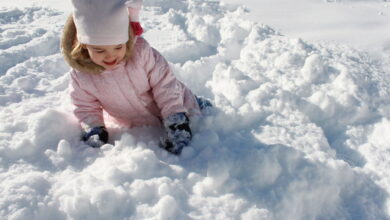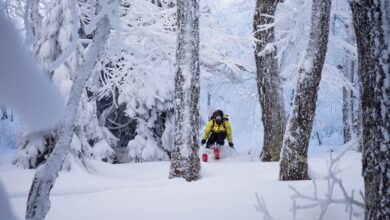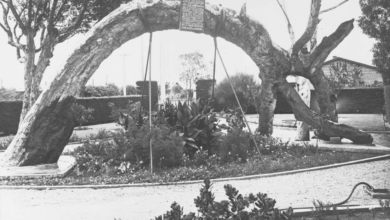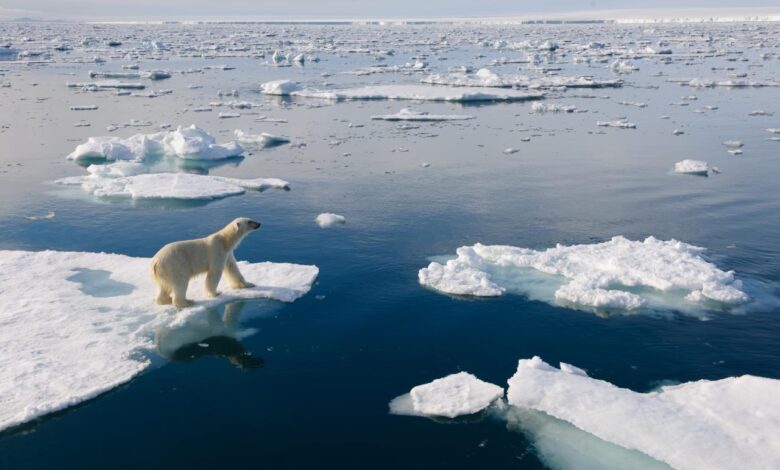
Polar Bears Climate Change and Food
Polar bears climate change food is a critical issue impacting these magnificent creatures. As the Arctic ice melts due to climate change, polar bears face a shrinking hunting ground and changing prey availability. This directly affects their survival, as they rely heavily on seals for sustenance. The changing environment forces them to adapt or face dire consequences.
Understanding these complex interactions is key to protecting polar bear populations.
This exploration dives into the intricate relationship between polar bears, climate change, and their food sources. We’ll examine how melting sea ice alters hunting strategies, explore alternative food sources, and analyze the potential impacts on their overall survival. The effects extend beyond polar bears, influencing the entire Arctic ecosystem.
Polar Bear Population Dynamics
Polar bears, iconic symbols of the Arctic, are facing unprecedented challenges due to the rapid changes occurring in their icy habitat. Understanding their population trends and the threats they face is crucial for developing effective conservation strategies. The delicate balance of their ecosystem is under immense pressure, and the future of these magnificent creatures hinges on our ability to address these issues.
Current Polar Bear Population Trends
Current data indicates fluctuating polar bear populations across various regions. Factors like sea ice availability, prey abundance, and environmental conditions are all significant determinants. The Arctic’s changing climate is the most prominent driver of these fluctuations. Sea ice, the primary platform for hunting seals, is retreating at an alarming rate, forcing bears to swim longer distances and impacting their ability to secure food.
Effects of Climate Change on Polar Bear Populations
Climate change directly impacts polar bear populations through habitat loss and alterations in prey availability. As sea ice diminishes, polar bears are forced to swim longer distances between ice floes, which can result in exhaustion, drowning, and increased vulnerability to other stressors. The loss of sea ice also disrupts the hunting patterns of their primary prey, ringed seals, which further impacts polar bear access to food.
This disruption can lead to decreased body condition, reduced reproductive success, and ultimately, population decline. A recent study in the Hudson Bay region highlights the direct correlation between declining sea ice and the declining body condition of polar bears.
Polar bears are facing a serious food crisis due to climate change, impacting their survival. The shrinking ice sheets are making it harder for them to hunt seals, their primary food source. Meanwhile, there’s a lot of buzz around the NHL, with the St. Louis Blues reportedly showing interest in trading for Pavel Buchnevich, which could have a significant impact on their team’s future blues pavel buchnevich trade interest.
This highlights the broader struggle of wildlife populations facing human-induced environmental changes.
Historical Population Data and Changes, Polar bears climate change food
Historical data on polar bear populations shows a significant trend of expansion in some regions, likely linked to increased prey availability. However, more recent data reveals a concerning decline in several regions, primarily attributed to habitat loss due to shrinking sea ice cover. This shift is evident in comparing population estimates from the mid-20th century to those from the present day.
Polar bears are facing a serious food crisis due to climate change, impacting their survival. The shrinking sea ice is making it harder for them to hunt seals, their primary food source. This directly connects to the plight of other Arctic wildlife and ecosystems. A recent study on the effects of climate change on Arctic animals, particularly those focused on the changing availability of food, highlights the challenges faced by animals like polar bears.
Interestingly, a similar struggle for survival is evident in the work of Dayme Arocena Al Kemi, a remarkable individual pushing for environmental awareness , who advocates for sustainable solutions to environmental challenges. This emphasizes the urgent need for global action to protect these magnificent creatures and their habitats.
For instance, populations in the Canadian Arctic have shown a dramatic decrease since the 1980s, correlating with the rapid decline of sea ice in that region.
Threats to Polar Bear Survival
Beyond climate change, several other threats contribute to the challenges faced by polar bears. Hunting, while regulated in many areas, still poses a significant threat, particularly in some regions. Pollution, including contaminants in the food chain, can accumulate in polar bear tissues, impacting their health and reproductive success. Human encroachment into polar bear habitats, driven by resource extraction, tourism, and other activities, can lead to increased human-wildlife conflicts and alter the natural behavior of polar bears.
Comparison of Polar Bear Subpopulation Sizes
| Region | Population Estimate | Year | Threats |
|---|---|---|---|
| Western Hudson Bay | 800-1000 | 2023 | Reduced sea ice, prey availability, human encroachment |
| Baffin Bay | 2000-2500 | 2020 | Reduced sea ice, hunting, pollution |
| Beaufort Sea | 1500-2000 | 2022 | Reduced sea ice, hunting, oil and gas exploration |
| Chukchi Sea | 1000-1500 | 2021 | Reduced sea ice, hunting, shipping |
Climate Change Impacts on Polar Bear Food Sources

Polar bears, apex predators of the Arctic, are intricately linked to the health of their environment. Their survival hinges on the availability of their primary food source: seals. As climate change alters the Arctic landscape, the availability and accessibility of these seals are profoundly impacted, posing a significant threat to polar bear populations. The shifting sea ice patterns are dramatically altering the hunting strategies and success rates of these magnificent creatures.The availability of seals, a cornerstone of the polar bear diet, is directly tied to the extent and stability of sea ice.
Sea ice serves as a crucial platform for seals to rest, hunt, and breed. Changes in sea ice extent and timing affect the seals’ behavior and distribution, making them more difficult for polar bears to locate and capture.
Sea Ice and Seal Hunting Strategies
Changes in sea ice profoundly impact polar bear hunting strategies. The shrinking and thinning of sea ice limit the areas where polar bears can hunt seals effectively. This forces bears to travel farther distances to find suitable hunting grounds, often expending significant energy without success. Furthermore, the shifting patterns of sea ice influence the movement and behavior of seals, making them more elusive prey.
Polar bears are facing a tough time finding food due to climate change, impacting their survival. The ongoing conflict in Israel and Gaza, like other global events, can also have unforeseen ripple effects, potentially affecting resources and influencing the global response to environmental crises like the one polar bears face. A recent cease fire in the region, Israel Gaza cease fire , might offer a chance for more focused attention on the dwindling food sources available for these magnificent creatures.
Ultimately, the plight of the polar bear highlights the interconnectedness of global issues and the urgent need for sustained action on climate change.
Polar bears, adapted to hunting on stable sea ice, struggle to adapt to these dynamic conditions.
Alternative Food Sources
While seals are the primary food source, polar bears occasionally consume alternative food sources. These include carcasses of other marine mammals, birds, and even vegetation. However, the nutritional value and availability of these alternative food sources are often limited. The effectiveness of alternative food sources is variable and often insufficient to meet the energetic demands of a polar bear.
They remain largely dependent on seals.
Prey Species Composition Shifts
As sea ice continues to decline, the distribution of prey species is changing. The abundance of some seal species, which rely on sea ice for breeding and resting, may decline, while other species that thrive in open water might become more prominent. This shift in prey species composition could lead to a challenging adaptation for polar bears, as their hunting strategies are optimized for specific seal species.
This could lead to increased competition for resources and changes in the overall health of the polar bear population.
Sea Ice Extent and Seal Populations
| Sea Ice Extent | Seal Population | Year | Impact |
|---|---|---|---|
| High | High | 2000 | Stable ecosystem |
| Moderate | Moderate | 2010 | Reduced hunting success |
| Low | Low | 2020 | Significant population decline |
| Very Low | Very Low | 2030 | Potential local extinction |
The table above illustrates the projected relationship between sea ice extent and seal populations. The projected decline in sea ice extent correlates with a decline in seal populations, directly impacting the polar bear population. This is a critical factor in understanding the vulnerability of polar bears to climate change.
Polar Bear Adaptations and Survival Strategies
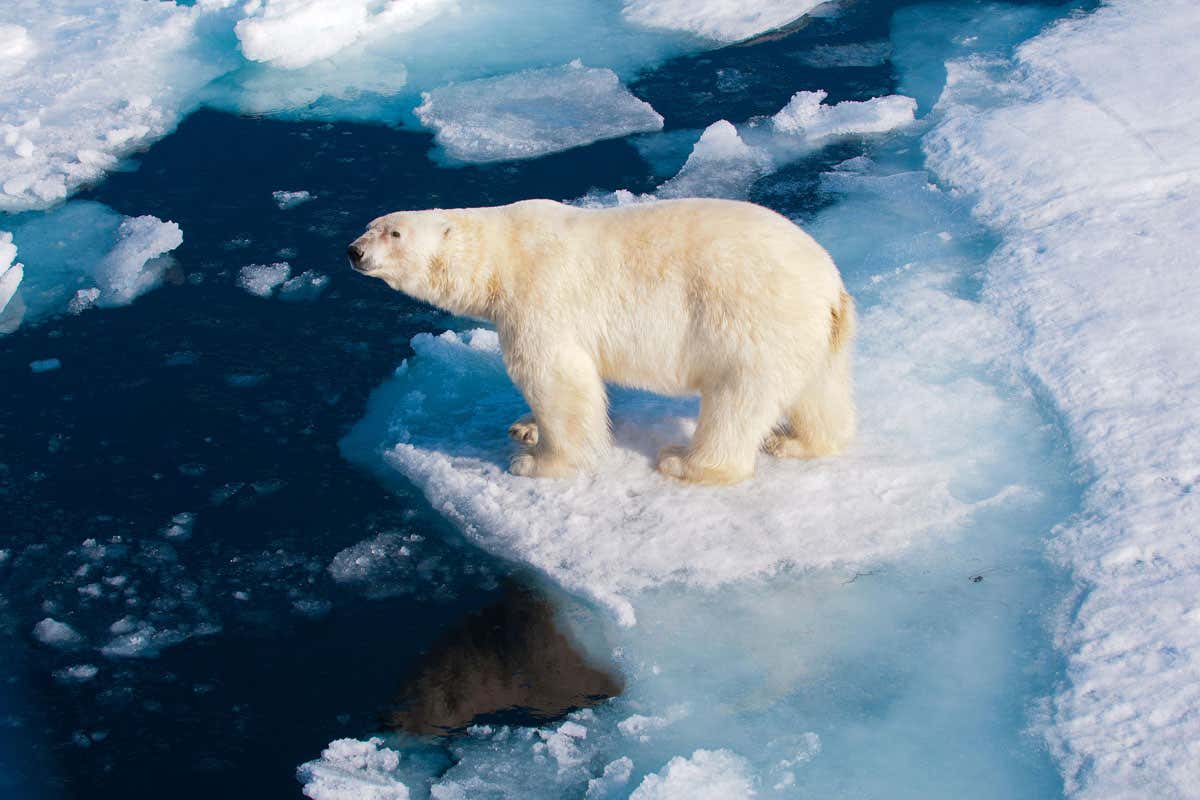
Polar bears, apex predators of the Arctic, possess a remarkable array of physical and behavioral adaptations that have allowed them to thrive in their icy environment for millennia. These adaptations, honed over generations, are crucial for their survival, enabling them to hunt, navigate, and endure the harsh conditions of their habitat. However, the ongoing impacts of climate change are putting increasing pressure on these strategies, challenging the bears’ ability to maintain their populations and resilience.The relentless warming of the Arctic, characterized by melting sea ice, is altering the very foundation of polar bear existence.
Polar bears are facing a serious food crisis due to climate change, impacting their survival. Melting sea ice, their primary hunting ground, is making it harder for them to catch seals. This, coupled with the complexities of a changing Arctic ecosystem, is a pressing issue. Interestingly, the recent news about the niue nu domain in Sweden niue nu domain sweden doesn’t directly relate, but the broader theme of environmental challenges and adapting to a changing world is a common thread.
The dwindling food supply underscores the urgent need for conservation efforts to protect these magnificent creatures.
Sea ice, their primary hunting platform, is diminishing, forcing bears to modify their hunting tactics and impacting their overall energy balance. This change necessitates an understanding of how these adaptations are evolving in response to these unprecedented environmental shifts. The varied impacts of climate change across different Arctic regions also dictate the need for a nuanced perspective on polar bear survival strategies, highlighting the importance of regional variability.
Physical Adaptations for Hunting
Polar bears are exquisitely adapted for hunting seals, their primary food source. Their physical attributes directly contribute to their hunting success, and these adaptations are vital to their survival in the harsh Arctic. These adaptations have evolved over time, allowing bears to maximize their efficiency and effectiveness in the challenging environment.
| Adaptation | Description | Impact of Climate Change | Example |
|---|---|---|---|
| Thick Blubber Layer | A thick layer of blubber insulates the bear from extreme cold and provides buoyancy in the water. | Changes in prey distribution due to melting ice may require bears to swim longer distances, putting more stress on their blubber reserves. | A bear with depleted blubber reserves might struggle to maintain body temperature during extended periods of swimming. |
| Powerful Jaws and Teeth | Sharp claws and powerful jaws are critical for capturing and killing seals. | Changes in prey availability could lead to bears focusing on alternative prey sources, putting stress on their teeth and jaws, as these may not be optimal for the new prey. | If a bear switches to consuming walruses, which have tougher skin, it might experience more wear and tear on its teeth. |
| Camouflaged Fur | The white fur provides excellent camouflage in the snowy environment, making them nearly invisible to prey. | Decreased snow cover reduces the effectiveness of camouflage, potentially increasing vulnerability to predators or to humans. | A bear in a region with less snow cover might be more visible to prey, making it harder to stalk and hunt them. |
| Large Size and Strength | Their size and strength are essential for overpowering seals. | Smaller bears may have difficulty competing for prey in a changing environment, affecting their reproductive success. | Smaller bears may not have the strength to secure a kill against larger seals. |
| Exceptional Sense of Smell | An acute sense of smell allows them to locate seals and other prey from significant distances. | Changes in prey distribution due to habitat shifts could impact a bear’s ability to locate prey effectively. | If seals shift their habitats due to ice melt, a bear might struggle to find them in the new location. |
Regional Variations in Survival Strategies
The Arctic environment is not uniform, and climate change impacts vary across different regions. This regional variability necessitates distinct survival strategies for polar bears.
Polar bears in areas experiencing rapid ice loss might exhibit more frequent and extended periods of foraging on land. Conversely, bears in regions with relatively stable ice conditions might rely more on traditional hunting techniques.
Importance of Genetic Diversity
Genetic diversity is crucial for the resilience of any species, especially in the face of environmental changes. A diverse gene pool allows a population to adapt to new challenges, providing a wider range of traits that can be beneficial in evolving conditions.
Polar bears are facing a tough time with dwindling food sources due to climate change. Their hunting grounds are melting away, making it harder to find seals. Interestingly, the luxurious soho 54 hotel raad almansoori is a beautiful example of architectural design, showcasing intricate details and modern amenities. However, this shouldn’t distract from the pressing issue of how melting ice affects polar bears’ survival and the vital role food plays in their existence.
Polar bears with a higher degree of genetic variation might have a better chance of adapting to climate change and the resulting shifts in their environment. Conservation efforts must focus on maintaining genetic diversity within polar bear populations to ensure their long-term survival.
Conservation Efforts and Management Strategies: Polar Bears Climate Change Food
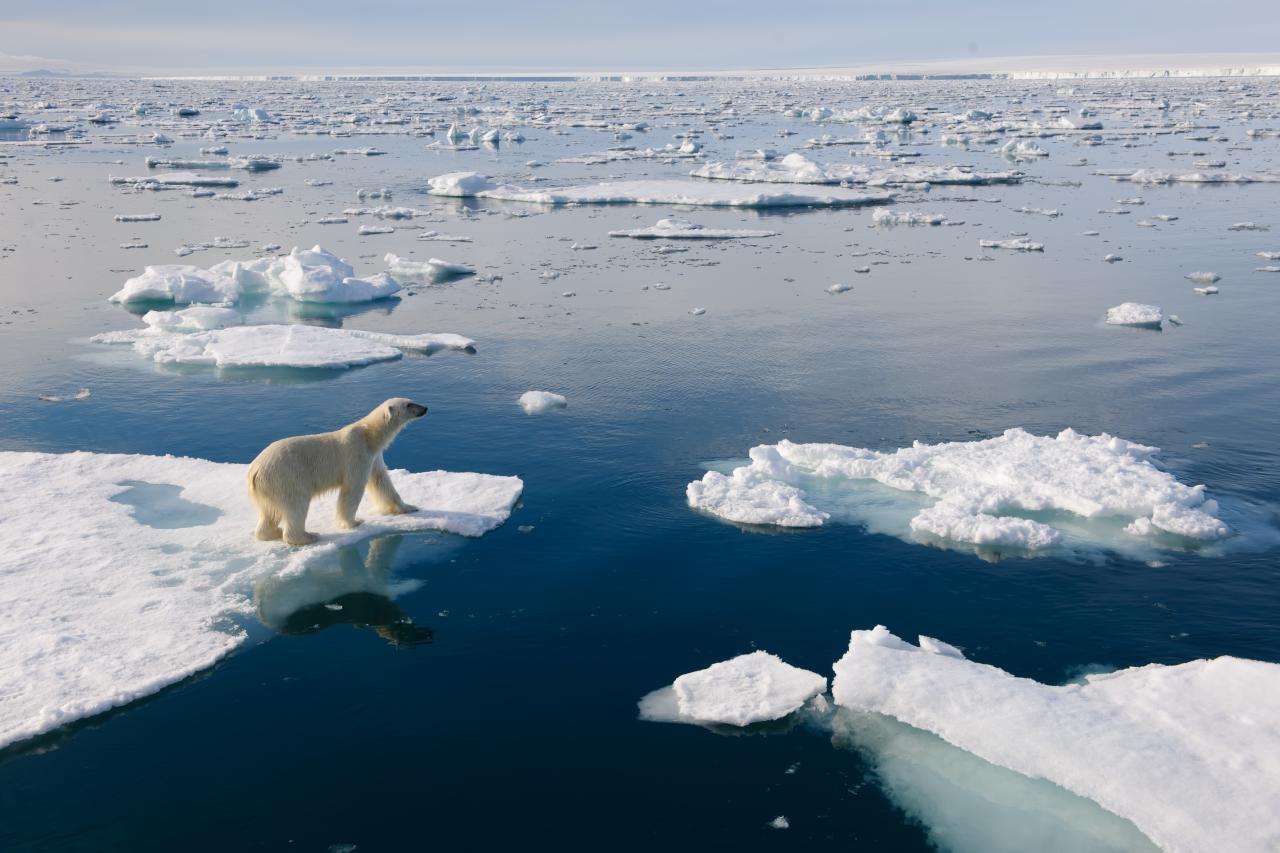
Protecting polar bears in the face of climate change requires a multifaceted approach encompassing various conservation efforts and management strategies. These strategies must address the immediate threats posed by habitat loss, food scarcity, and changing environmental conditions, while also fostering long-term resilience for these magnificent creatures. The urgency of the situation demands immediate action and international cooperation to ensure the survival of polar bears for future generations.Effective conservation strategies must go beyond simply protecting polar bear populations; they must also tackle the underlying causes of their decline.
Understanding the complex interplay between climate change, habitat loss, and food availability is crucial for developing targeted interventions. This requires sustained research, monitoring, and adaptation measures to equip polar bears with the tools to thrive in a rapidly changing world.
Existing Conservation Efforts
Numerous conservation initiatives are underway globally to safeguard polar bear populations. These efforts often focus on establishing protected areas, monitoring populations, and supporting local communities dependent on polar bear resources. International agreements and collaborations play a vital role in coordinating conservation efforts across national boundaries. The establishment of protected areas, for example, can help maintain crucial habitats and breeding grounds, thereby supporting healthy populations.
Mitigating Climate Change Impacts
Addressing the root cause of polar bear decline, climate change, necessitates global action. Reducing greenhouse gas emissions through transitioning to renewable energy sources and promoting sustainable practices are essential. Developing adaptation strategies for polar bears in altered environments is also critical. This includes research into potential shifts in prey availability and suitable habitats, enabling polar bears to adapt and find alternative food sources or relocate to more suitable environments.
Implementing effective mitigation strategies will help to limit the extent of climate change and its consequences on polar bear populations.
International Cooperation
International cooperation is paramount in addressing the complex challenges faced by polar bears. Sharing knowledge, resources, and best practices between nations is essential for developing effective conservation strategies. Joint research initiatives, coordinated monitoring programs, and collaborative management plans can bolster conservation efforts. Sharing data and expertise across borders facilitates a comprehensive understanding of the factors affecting polar bear populations and allows for the development of effective conservation strategies.
Research and Monitoring Efforts
Research and monitoring efforts are crucial to understanding the effects of climate change on polar bear populations. Long-term studies tracking population trends, habitat use, and physiological responses to environmental changes provide vital information. Monitoring vital signs, such as body condition, reproductive rates, and survival rates, allows for a comprehensive assessment of the impacts of climate change on polar bear health and well-being.
This data informs the development of targeted conservation strategies and enables the evaluation of the effectiveness of existing programs.
Table of Conservation Programs
| Program | Region | Focus | Impact |
|---|---|---|---|
| IUCN Polar Bear Specialist Group | Global | Research, conservation assessment, and policy recommendations | Provides a platform for international collaboration, enabling the development of global conservation strategies. |
| Canadian Polar Bear Management | Canada | Population monitoring, hunting regulations, and habitat protection | Has seen some success in managing polar bear populations, but faces challenges with climate change impacts. |
| US Fish and Wildlife Service | United States | Monitoring polar bear populations in the Arctic | Provides data on the status and trends of polar bear populations in the region. |
| International Polar Year | Arctic | Global research on Arctic environments | Generated a wealth of data on the Arctic ecosystem, including polar bear populations, and their responses to climate change. |
Future Projections and Predictions
The future of polar bears hinges critically on the trajectory of climate change. Projecting population trends requires considering the complex interplay of dwindling sea ice, changing prey availability, and the physiological adaptations of these magnificent creatures. These projections have profound implications for not only polar bear survival but also for the entire Arctic ecosystem. Understanding these potential consequences is vital for developing effective conservation strategies.The ongoing loss of sea ice, a primary hunting ground for polar bears, directly impacts their ability to hunt seals.
Predicting the future population dynamics of polar bears involves modelling these intricate relationships, considering the various climate change scenarios. These models incorporate factors such as sea ice extent, prey availability, and the bears’ physiological responses to environmental changes.
Potential Population Trends
Projecting polar bear population trends involves examining various climate change scenarios. A severe decline in sea ice coverage is likely to lead to a dramatic reduction in polar bear populations, as access to hunting grounds is severely limited. Conversely, if climate change mitigation efforts are successful, and sea ice extent remains relatively stable, polar bear populations might stabilize or even show slight increases.
The magnitude of these changes depends largely on the pace and extent of global warming. For example, studies from the International Polar Bear Specialist Group show significant regional variations in predicted population declines.
Consequences for Other Ecosystems and Species
The decline of polar bears has ripple effects throughout the Arctic ecosystem. Polar bears are apex predators, and their disappearance would disrupt the delicate balance of the food web. This could lead to the overpopulation of prey species like seals, which in turn could affect the populations of other species dependent on them. Furthermore, the melting of sea ice also affects the breeding and foraging patterns of other Arctic species, such as walruses and Arctic foxes.
Assisted Migration or Other Conservation Strategies
Assisted migration, while controversial, may be a necessary tool for species conservation in the face of rapidly changing environments. However, its application to polar bears is complex due to their highly specialized needs and their dependence on sea ice. Other conservation strategies, like protecting key habitats and promoting responsible human activities in the Arctic, are crucial to help polar bears adapt to changing environments.
Stricter regulations on industrial activities in the Arctic and the creation of protected areas can provide vital sanctuaries for polar bears.
Implications for Polar Bear-Human Interactions
Climate change is expected to increase the frequency and intensity of polar bear-human interactions. As sea ice shrinks, polar bears may venture into populated areas in search of food, leading to potential conflicts. This includes increased risks of encounters with humans and their settlements, as well as increased potential for damage to property. Adapting to these interactions and mitigating the risk of conflict is vital for both human safety and polar bear conservation.
For example, increased surveillance of polar bear activity near human settlements and education campaigns to raise awareness about responsible behaviour near polar bears are important measures.
Projected Sea Ice Decline and its Impact on Polar Bear Distribution
| Year | Projected Sea Ice Extent (millions of square kilometers) | Potential Polar Bear Distribution Shift |
|---|---|---|
| 2030 | 8.5 | Southern range expansion, increasing potential for human-bear interactions in coastal communities. |
| 2050 | 6.2 | Significant range contraction, increased pressure on remaining sea ice habitats. Potential for population fragmentation. |
| 2070 | 4.8 | Critical reduction in range, limited viable habitats. High risk of population decline in many regions. |
This table illustrates a simplified projection. The actual impact of sea ice decline on polar bear distribution will vary regionally due to differences in sea ice conditions and prey availability. Further research is needed to refine these projections and provide more accurate predictions.
Last Point
In conclusion, polar bears climate change food is a pressing environmental concern. The diminishing sea ice and changing prey availability pose significant threats to polar bear populations. Adaptation strategies and conservation efforts are crucial to their survival. International cooperation and continued research are vital to understanding and mitigating the long-term impacts of climate change on these iconic animals.
The future of polar bears hangs in the balance, and the choices we make today will determine their fate.
Quick FAQs
What are some alternative food sources for polar bears besides seals?
In some cases, polar bears have been observed consuming birds, eggs, or even carcasses. However, these alternative food sources are not consistent or reliable replacements for seals, and their overall nutritional value is likely lower.
How does hunting success for polar bears relate to sea ice extent?
The availability of sea ice directly correlates to seal availability. Less sea ice means less access to seals for hunting. This can lead to nutritional deficiencies and ultimately impact the overall health and reproduction rates of the bear population.
What is the role of genetic diversity in polar bear adaptation to climate change?
Genetic diversity is crucial for adaptation. Populations with higher genetic diversity have a greater chance of possessing traits that allow them to thrive in changing conditions. This is vital as environmental pressures increase.
What international agreements exist to protect polar bears?
Several international agreements and collaborations exist, such as the agreements under the Convention on International Trade in Endangered Species (CITES). However, effective implementation and enforcement are crucial for success.

